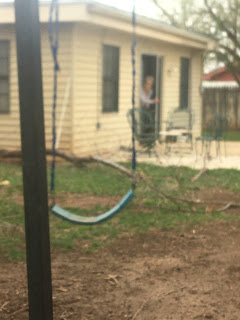And I'll tell you - kids are doing this kind of stuff all the time. My grandson loves some youtuber named DanTDM to learn walkthroughs about his games. But ok. I get that Minecraft isn't Algebra or Phonics. So I'll go with another example.
Yesterday, I cut my hair. I know I know. I've seen the COVID memes about not cutting your bangs. Maybe I do need therapy. But this trope serves well for what I'm trying to express. For most of you that know me, I don't go to the hair salon. Not often. I think it's been 3 years since my annual hair cut. At waist length, it had gotten fuzzy and crunchy on the ends, despite the coconut oil. And I'd started getting headaches from keeping it in a French twist.
So I fired up the youtube, pulled out the brass handled scissors Miles gave me from his father's estate sale and cut 8 inches of hair into long layers. Its not perfect. But it's not frizzy. And I don't have a headache today.
So. Like the rest of the world of people of all ages, I learned something new. Online. Alone. Cool.
What I didn't get was feedback. Feedback from a more knowledgeable peer or expert. (Where was Chloe when I needed her?) Nothing from a teacher. We've been saying for a long time that teachers shouldn't be the sage on the stage. Kids really don't need us to deliver facts and information. As we move online, perhaps why we are all struggling is that the situation demands the constructivist approaches researchers and experts have been espousing as the best way forward. The old way isn't going to work.
I'm reminded again of Cambourne. How can we apply his concepts in online learning? And online for literacy learning?
- Immersion: How can we immerse students in sights, sounds, and content - meaningful and relevant content and context?
- Demonstration: How can we give practical and concrete demonstrations of both procedures and explanations of content as well as the cognitive processes and self-regulatory awareness required for assessment capable and generative learning? How can we design learning that allows students to provide demonstrations of this learning?
- Expectations: How can we provide clearly identified learning expectations and student exemplars for products and processes students should be able to complete? How does our online environment support and encourage high levels of success to reach these high expectations.
- Responsibility:What are students doing to demonstrate the learning? How are we designing lessons that help students understand where they are in the stages of approximating the learning expectations and criteria?
- Practice: In what ways can we manipulate time, support, place, groupings, complexity, and content to help students practice new knowledge, skills, attitudes, etc?
- Feedback/Support/Celebrations: How do we provide feedback continuously during online learning that helps kids celebrate their successes, refine their learning products and processes, and set goals for the next stages?
You see, what I needed was a teacher to guide me while I was cutting my hair. "No - try this angle. And when you finish that section, try..." And after I had finished, to review what I had done to help me fix the places that were - and still are - off. It's the feedback DURING learning and AFTER learning that houses the greatest potential for learning online. Can we learn new stuff online? Without a doubt.
The learning will come when our platforms have addressed the conditions of learning combined with the processes of learning. Check out how Cambourne visualizes it:
The challenge for us now isn't simply getting stuff online for kids to do. The real work begins when we interact with students to provide feedback about what they have done and the way in which they have gone about doing so.




